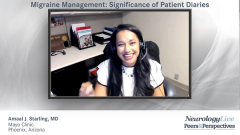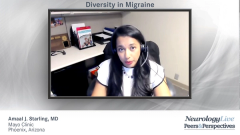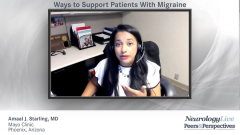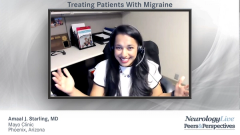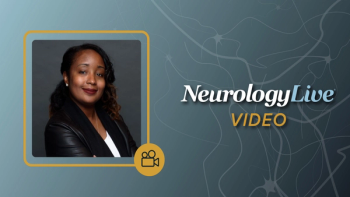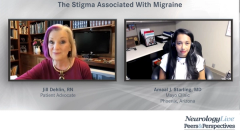
Ways to Support Patients With Migraine
Various ways health care professionals can become involved in migraine advocacy, and tips that can be used in the clinic to support patients.
Episodes in this series

Jill Dehlin, RN: In what ways, Dr Starling, can health care providers become involved in migraine advocacy? You are so great at this! What kind of tips can you give other health care providers?
Amaal J. Starling, MD: I think it can be overwhelming to say to a physician or health care provider, “You need to get involved with advocacy,” because the physician will say, “What are you talking about? I take care of patients, I keep up with my charts, I’m trying to keep up with my portal, and I’m trying to eat lunch in between all this. Then I’m supposed to go to the bathroom, and I also have a family. Then I’m supposed to do some yoga and meditation to prevent burnout, right? Now you’re telling me that I need to participate in advocacy?”
It’s important to figure out how we can incorporate advocacy into what you are already doing on a daily basis, so it is something you are doing rather than something else that you have to do. It is something you’ve incorporated into what you are already doing. If you are already seeing patients, you are already advocating for your patients. Call it what it is, you are already an advocate as a physician, and as a health care provider. So great job, you are already an advocate. Now you can take it a step further. When you are with that patient, if you don’t have additional time, which I know a lot of health care providers and physicians don’t, at least have a list of resources for patients with migraine. The American Migraine Foundation, Miles for Migraine, and Migraine World Summit, are all different resources, and you can hand the list to that patient, so they can take that with them.
You can also make sure to use unified, empowering, non-stigmatizing language. That is a form of advocacy. Talk about migraine as a genetic neurologic disease, migraine attacks, and migraine as a disease. Describe unsuccessful treatments as ineffective rather than saying a patient failed a treatment. Talk about being a migraine warrior rather than suffering from migraine. All of these things are empowering and will show a form of advocacy for that patient.
In addition, you teach. You are teaching all the time. You are lecturing, and you may be shy to do so sometimes. But you know what, it advances your academic career. That is a form of advocacy, and it advances your academic career. Be willing to teach others about migraine and headache diseases. Be willing to mentor others. Accept high school students, college students, medical students, and residents to be able to shadow you when you’re treating your patients with migraine and other headache diseases.
When the media contacts you for a quote regarding an article that just came out, or they want to talk to you about migraine and exercise, or they want to talk to you about migraine and diet, and you think, “well, I don’t know if I’m really an expert on migraine and diet.” Well, you know what, you’re more of an expert than that journalist. Maybe you think all you’re going to talk about is, “Hey, migraine is a genetic neurologic disease, and these are the treatment options that I use.” You agree to speak with that journalist, you review your talking points, and they will use a quote from those talking points you have. That’s a way to get this disease to be seen, plus it gets your name out there, and it helps your academic career.
Some people are involved in social media, and if you’re not, you can create a social media platform, which is as simple as creating a Twitter account. If you don’t want to post, you can follow some migraine advocates. You can follow the American Headache Society and the American Migraine Foundation, and simply retweet what we post. That is a form of advocacy. I suspect some of the individuals who start doing these things will start getting energized to do a little more.
If you want to do more, there are resources in how to learn to become an advocate. The American Headache Society, at their Scottsdale Headache Symposium and at the Annual Scientific Meeting, has advocacy training sessions. We have advocacy events; if you become a member, that includes all of our membership and advocacy events that people can participate in. Headache on the Hill is something all physicians and health care providers can participate in every year. The American Academy of Neurology has the Palatucci Advocacy Leadership Forum, where you can get advocacy leadership training over the course of a weekend. You can seek out these advocacy training programs if you start developing a thirst for advocacy, like I did. For me, it was my antidote for burnout. It’s really been what has given me the “why” in medicine and has helped energize my career and keep me happy in what I do.
Jill Dehlin, RN: I remember when I first became disabled by migraine, and I met a fellow advocate. I told her I felt as though I’d lost my identity as I was battling this disease. She said to me, “Well, let’s just find you a new identity then.” Advocacy has become such a great part of my identity, and I know it’s a great part of your identity as well. I want to thank you for all that you do for us patients and to educate other health care providers as they learn how to treat people with headache and migraine.
Thank you for watching this NeurologyLive® Peers & Perspectives®. If you enjoyed the content, please subscribe to our e-newsletters to receive upcoming programs and other great content right in your inbox.
Transcript Edited for Clarity
Newsletter
Keep your finger on the pulse of neurology—subscribe to NeurologyLive for expert interviews, new data, and breakthrough treatment updates.



